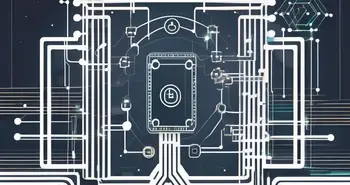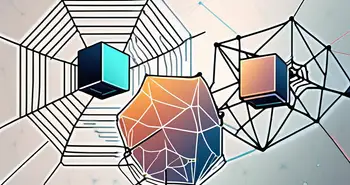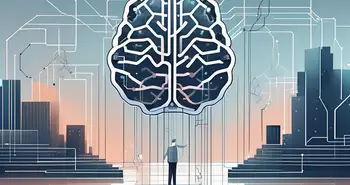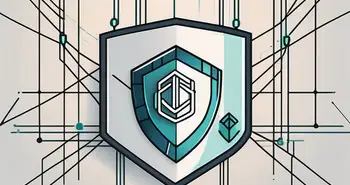The Fascinating History of Blockchain
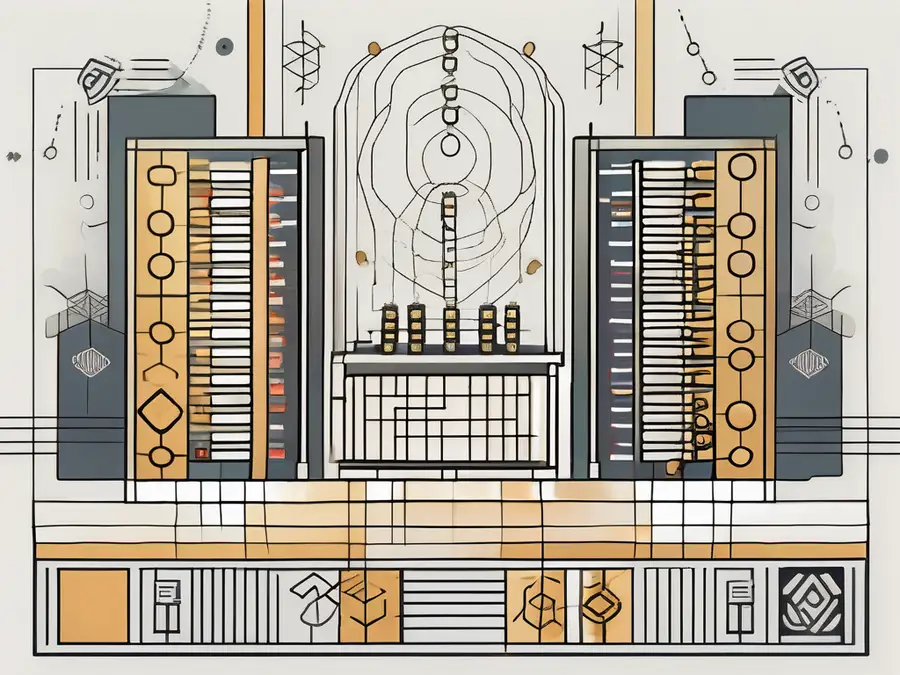
As an expert in blockchain technology, I am excited to take you on a journey through its fascinating history. Blockchain has revolutionized various industries and its impact continues to grow. So, let's start by understanding the concept of blockchain.
Understanding the Concept of Blockchain
In simple terms, blockchain is a decentralized digital ledger that records transactions across multiple computers. It ensures the transparency, security, and immutability of data. Each transaction is stored in a block, which is then linked to previous blocks using cryptographic hash functions, creating an unbreakable chain of information.
Defining Blockchain Technology
Blockchain technology is a distributed ledger system that eliminates the need for intermediaries in transactions. It allows participants to interact directly and securely without relying on a central authority. This transparency, coupled with secure cryptography, ensures the integrity of data and reduces the risk of fraud.
The Core Principles of Blockchain
Blockchain is built on three core principles:
- Decentralization: Instead of a single central authority, blockchain is distributed across multiple computers, called nodes. This eliminates the risk of a single point of failure, making it resilient and tamper-resistant.
- Transparency: All transactions recorded on the blockchain can be viewed by anyone with access. This promotes trust and accountability, as it is difficult to manipulate or alter data once it is stored.
- Security: Blockchain uses advanced cryptography to secure transactions. Each block is linked to the previous block using a unique hash, creating an unchangeable record. Additionally, consensus algorithms ensure that all participants agree on the validity of transactions.
Let's delve deeper into the concept of decentralization in blockchain. Decentralization is a fundamental aspect of blockchain technology that sets it apart from traditional centralized systems. In a centralized system, such as a bank, all transactions and data are stored and controlled by a single entity. This central authority has the power to manipulate or restrict access to the data, leading to concerns about privacy and security.
However, in a decentralized blockchain network, there is no single point of control. Instead, the network consists of multiple nodes, each maintaining a copy of the entire blockchain. This distribution of data across the network ensures that no single entity has complete control over the system. Even if some nodes fail or are compromised, the network can continue to function, as the remaining nodes maintain the integrity of the blockchain.
Furthermore, decentralization in blockchain enhances security. In a centralized system, a hacker only needs to breach the central authority's security measures to gain access to all the data. In contrast, in a decentralized blockchain network, an attacker would need to compromise a significant number of nodes simultaneously to alter the blockchain's data. This makes it incredibly difficult and resource-intensive for malicious actors to tamper with the information stored on the blockchain.
In conclusion, the concept of decentralization in blockchain ensures that power is distributed among participants, promoting transparency, security, and resilience. By eliminating the need for intermediaries and central authorities, blockchain technology revolutionizes the way transactions are conducted, opening up a world of possibilities for various industries.
The Genesis of Blockchain
No history of blockchain is complete without mentioning the pre-Bitcoin era.
The Pre-Bitcoin Era
Blockchain traces its roots back to the early 1990s when researchers explored the concept of a cryptographic chain of blocks. However, it wasn't until 2008 that blockchain gained global recognition with the introduction of Bitcoin.
The Introduction of Bitcoin and Blockchain
Bitcoin, the first successful implementation of blockchain, was introduced in a whitepaper by an anonymous person (or group) known as Satoshi Nakamoto. Bitcoin's decentralized nature and the underlying blockchain technology caught the attention of enthusiasts worldwide.
The Evolution of Blockchain
Blockchain has gone through various stages of evolution, each bringing its own innovations.
Blockchain 1.0: Cryptocurrency
The first stage, often referred to as Blockchain 1.0, was primarily focused on cryptocurrencies. Bitcoin paved the way, followed by other digital currencies like Ethereum and Litecoin. These cryptocurrencies utilized blockchain technology to create secure, decentralized virtual currencies.
Blockchain 2.0: Smart Contracts
The next stage, Blockchain 2.0, introduced the concept of smart contracts. Smart contracts are self-executing contracts with predefined terms and conditions. They eliminate the need for intermediaries and automate the execution of transactions. Ethereum played a significant role in popularizing smart contracts.
Blockchain 3.0: Decentralized Applications (DApps)
With Blockchain 3.0, the focus shifted from just cryptocurrencies and smart contracts to the development of decentralized applications (DApps). These applications leverage the decentralized nature of blockchain to provide secure, transparent, and censorship-resistant solutions in various domains such as finance, supply chain, and healthcare.
The Impact of Blockchain on Different Industries
Blockchain's potential has not gone unnoticed by industries across the spectrum.
Blockchain in Finance
The financial sector has been quick to embrace blockchain. This technology has the potential to revolutionize traditional banking processes by reducing transaction costs, increasing transparency, and enabling faster settlements. Additionally, blockchain-powered stablecoins offer stability in volatile markets.
Blockchain in Supply Chain
The supply chain industry is exploring blockchain to enhance traceability, reduce fraud, and streamline operations. By creating an immutable record of every transaction, blockchain ensures transparency and authenticity throughout the supply chain, from raw materials to the end product.
Blockchain in Healthcare
Blockchain has the potential to transform healthcare by improving data management, interoperability, and patient privacy. It enables secure sharing of medical records, reduces administrative costs, and enhances the accuracy of clinical trials. Ultimately, blockchain can empower patients to have greater control over their health data.
The Future of Blockchain
The future of blockchain holds immense promise, along with a few challenges.
Emerging Trends in Blockchain Technology
As blockchain evolves, emerging trends such as scalability solutions, privacy enhancements, and interoperability protocols are gaining attention. The development of layer 2 solutions and consensus mechanisms like Proof of Stake (PoS) aims to address the scalability and energy consumption concerns associated with blockchain technology.
Potential Challenges and Solutions for Blockchain Adoption
Despite the potential benefits, blockchain adoption faces challenges such as regulatory hurdles, scalability limitations, and integration complexities. Collaborative efforts between governments, businesses, and technologists are required to address these challenges and promote widespread adoption.
The Role of Blockchain in the Digital Age
Blockchain technology has the potential to reshape the digital landscape, providing a secure and decentralized infrastructure for various applications. From improving cybersecurity to reshaping digital identities, blockchain's role in the digital age is expanding, and its impact will continue to be felt across industries.
Personal Advice: As an expert in blockchain, I highly recommend staying updated with the latest developments in this rapidly evolving field. Explore blockchain projects, participate in communities, and educate yourself on the potential applications of this transformative technology. It's an exciting time to be part of the blockchain revolution!
Frequently Asked Questions (FAQ)
What is blockchain technology?
Blockchain technology is a decentralized digital ledger that records transactions across multiple computers. It ensures transparency, security, and immutability by linking blocks of information using cryptographic hash functions.
What are the core principles of blockchain?
The core principles of blockchain are decentralization, transparency, and security. Blockchain eliminates the need for intermediaries, promotes trust through transparency, and secures transactions using cryptography.
How has blockchain evolved over time?
Blockchain has evolved from being primarily used for cryptocurrencies (Blockchain 1.0) to encompassing smart contracts (Blockchain 2.0) and decentralized applications (DApps) (Blockchain 3.0). This evolution has opened up new possibilities for blockchain technology beyond just financial transactions.
What industries are leveraging blockchain technology?
Blockchain technology has found applications across various industries. The financial sector, supply chain industry, and healthcare are among the early adopters, leveraging blockchain for enhanced security, transparency, and efficiency.
What does the future hold for blockchain?
The future of blockchain looks promising, with emerging trends focusing on scalability, privacy enhancements, and interoperability. However, challenges such as regulations and integration complexities need to be addressed to enable widespread adoption.
Now that you have a good understanding of the fascinating history of blockchain and its potential impact on various industries, I encourage you to dive deeper into this revolutionary technology. Explore its applications, join the community, and stay informed about the latest advancements. Remember, blockchain has the power to transform the way we interact and transact in the digital world.
As you've seen, blockchain is not just a technology of the past and present, but it is also paving the way for the future of digital transactions and investments. Embrace the next step in this evolution with Morpher, a platform that exemplifies the innovative spirit of blockchain. Morpher offers you a seamless trading experience with zero fees, infinite liquidity, and the flexibility of fractional investing. Whether you're interested in stocks, cryptocurrencies, or even niche markets like NFTs, Morpher's revolutionary platform on the Ethereum Blockchain is designed to empower your trading strategies. Sign up now to experience the future of trading and receive your free sign-up bonus. Join Morpher and be part of the transformation in the world of investing.

Disclaimer: All investments involve risk, and the past performance of a security, industry, sector, market, financial product, trading strategy, or individual’s trading does not guarantee future results or returns. Investors are fully responsible for any investment decisions they make. Such decisions should be based solely on an evaluation of their financial circumstances, investment objectives, risk tolerance, and liquidity needs. This post does not constitute investment advice.

Painless trading for everyone
Hundreds of markets all in one place - Apple, Bitcoin, Gold, Watches, NFTs, Sneakers and so much more.

Painless trading for everyone
Hundreds of markets all in one place - Apple, Bitcoin, Gold, Watches, NFTs, Sneakers and so much more.

